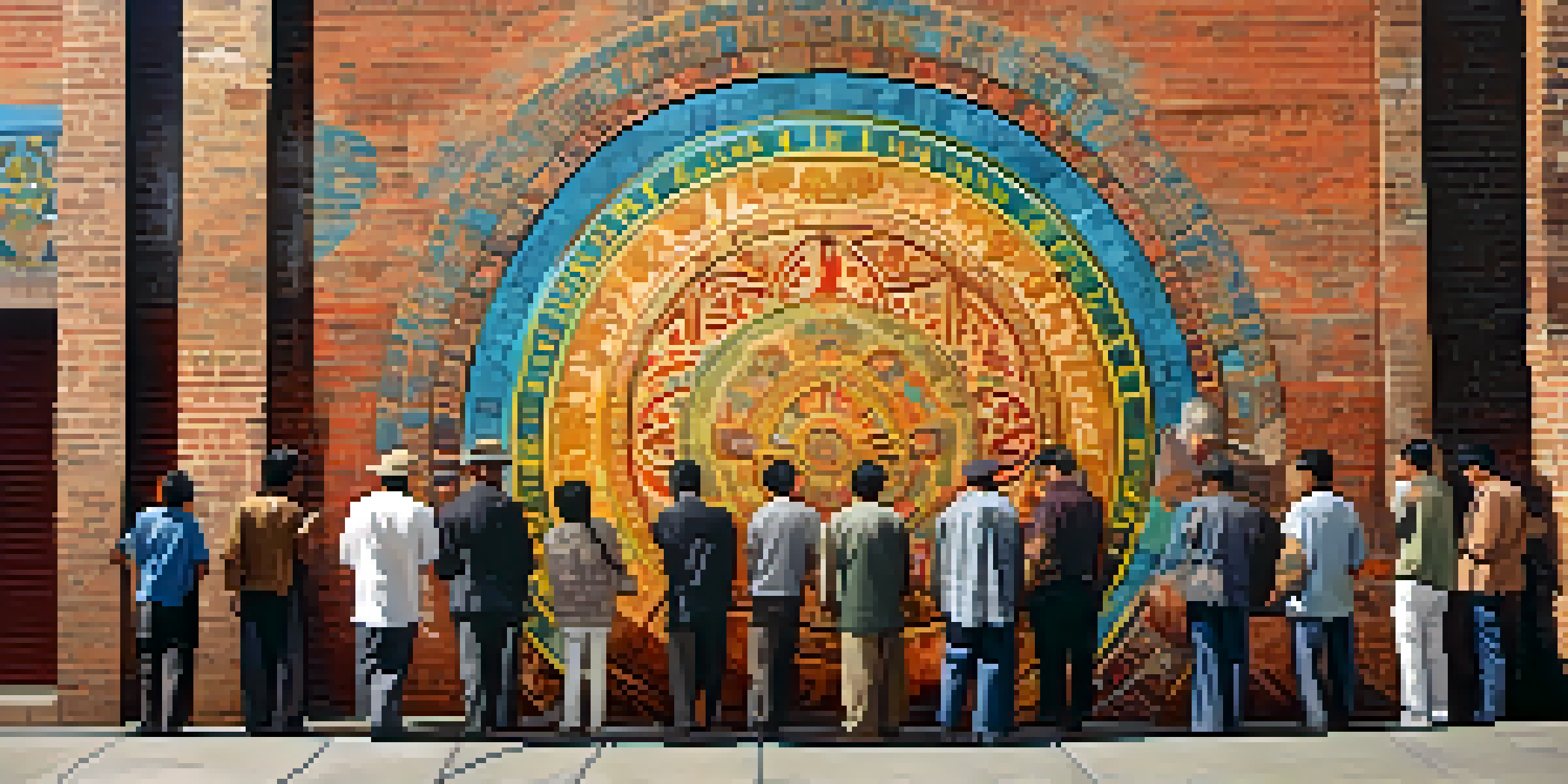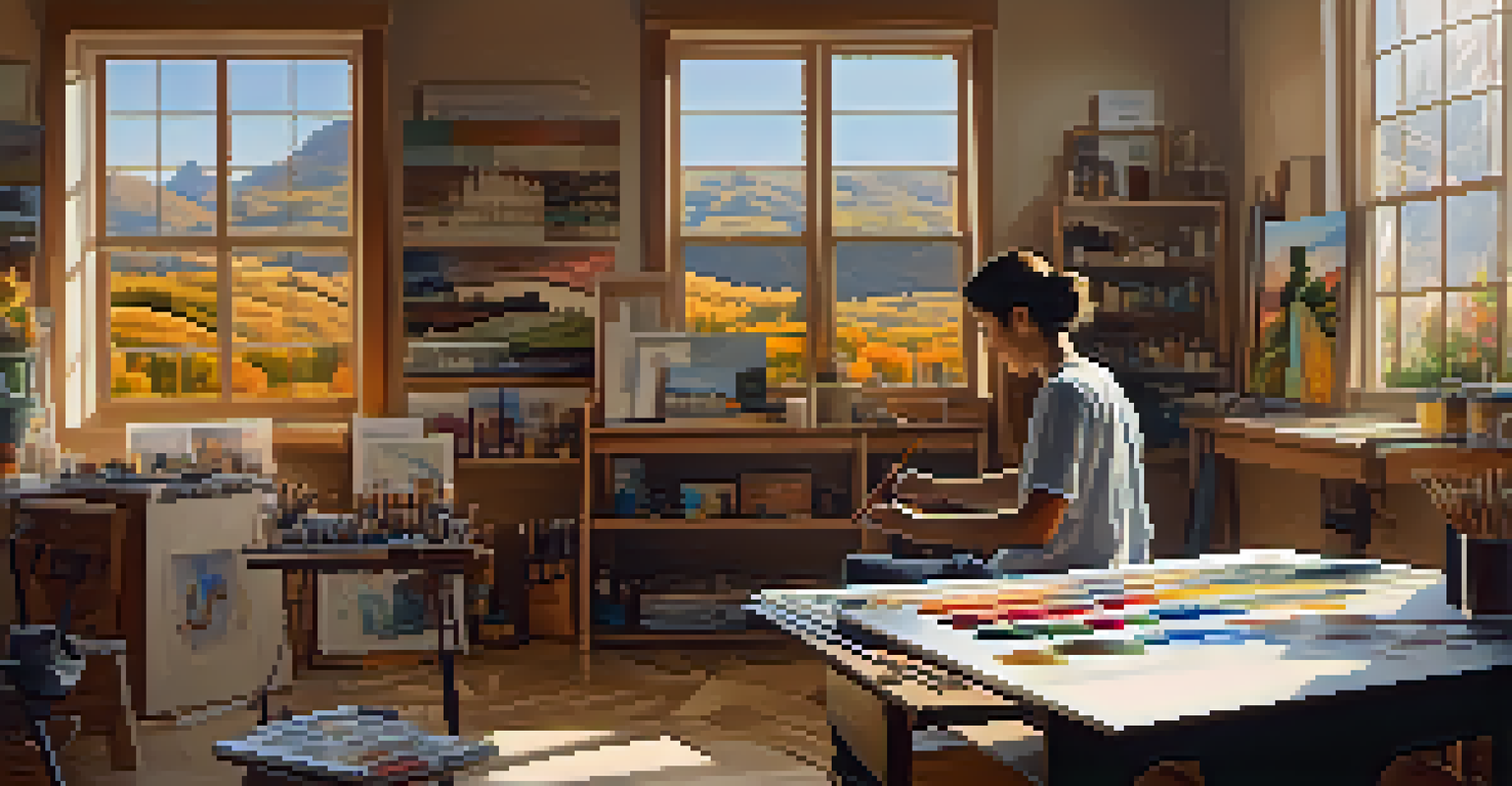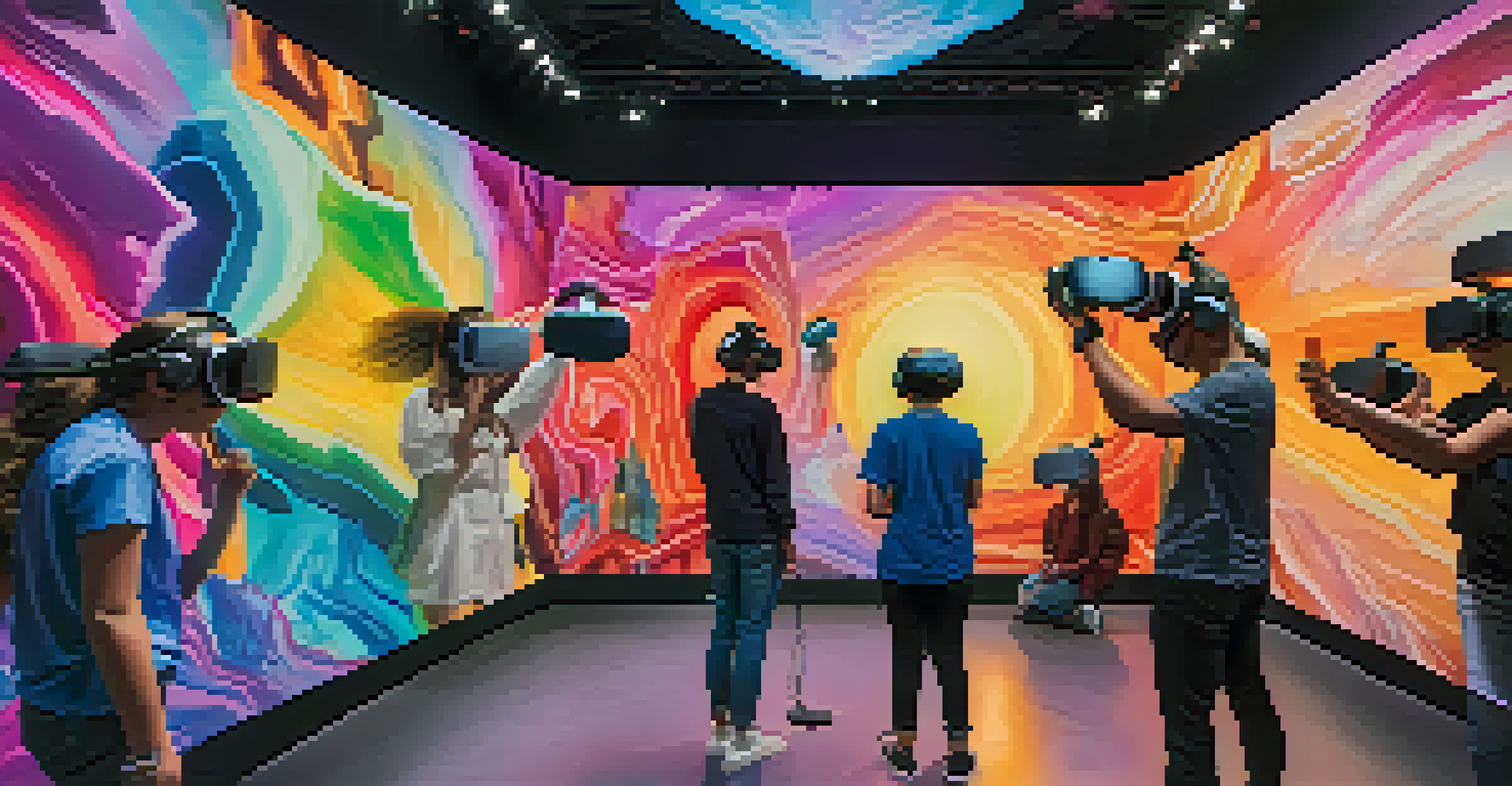The Impact of Globalization on Artistic Themes and Narratives

Understanding Globalization and Its Artistic Implications
Globalization refers to the interconnectedness of economies, cultures, and societies worldwide. This phenomenon has dramatically altered how art is produced, consumed, and appreciated. With artists drawing inspiration from diverse cultures, the lines between traditional and contemporary forms of art are increasingly blurred.
Art is the most beautiful of all lies.
As artists engage with global themes, they often reflect on shared human experiences, making their work resonate with wider audiences. For example, a painter might incorporate techniques from Eastern and Western styles, creating a unique fusion that speaks to a global audience. This melding of influences fosters a more inclusive narrative in the art world.
Ultimately, globalization encourages artists to explore and challenge cultural boundaries. This not only enriches their work but also invites viewers to engage with art that reflects a wider spectrum of human experiences.
Cultural Exchange: Art as a Global Language
Art serves as a universal language, transcending geographical boundaries and cultural differences. Through exhibitions, festivals, and digital platforms, artists can share their narratives with the world. This cultural exchange allows for a deeper understanding of different perspectives and experiences.

For instance, street art in urban areas often incorporates symbols and motifs from various cultures, creating a dialogue among diverse communities. This not only beautifies spaces but also sparks conversations about identity, belonging, and cultural heritage. The impact of such exchanges can be profound, as they often challenge stereotypes and promote empathy.
Globalization Blurs Artistic Boundaries
As artists draw inspiration from diverse cultures, traditional and contemporary art forms increasingly merge, enriching the global narrative.
Moreover, the rise of social media has amplified these exchanges, allowing artists from different backgrounds to collaborate and inspire one another. As a result, art becomes a tool for social change, addressing issues that resonate globally, such as climate change, inequality, and human rights.
The Role of Technology in Shaping Artistic Narratives
Advancements in technology have revolutionized how art is created and disseminated. Digital tools enable artists to experiment with new forms and techniques, leading to innovative artistic expressions. This accessibility allows for a broader range of voices to be heard in the art world.
Creativity takes courage.
One notable example is the rise of digital art and virtual reality experiences, which can reach audiences who may not have access to traditional gallery spaces. Artists can create immersive environments that tell complex stories, inviting viewers to explore narratives in ways that were previously unimaginable. This shift also diversifies the types of stories told in art.
However, this technological shift also raises questions about authenticity and originality. As art becomes more digitized, artists must navigate the fine line between inspiration and appropriation, ensuring their narratives remain genuine and respectful of their cultural roots.
Globalization's Effect on Traditional Art Forms
While globalization opens up new avenues for artistic expression, it can also pose challenges to traditional art forms. Many artisans feel pressure to adapt their work to meet global tastes, sometimes compromising their cultural authenticity. This can lead to a dilution of unique artistic traditions.
For instance, traditional crafts such as pottery or weaving may be altered to appeal to a broader market, losing the rich cultural narratives embedded in the original practices. This commercialization raises concerns about the preservation of cultural heritage and the sustainability of traditional art forms.
Art as a Tool for Social Change
Through cultural exchange and technology, art becomes a powerful medium to address global issues, fostering empathy and advocacy.
Conversely, globalization can also revitalize interest in traditional arts by introducing them to new audiences. Collaborations between contemporary artists and traditional artisans can lead to a renaissance of cultural practices, ensuring that these art forms continue to thrive in a globalized world.
Art as a Reflection of Global Issues and Movements
Art has always been a powerful medium for reflecting societal issues, and globalization amplifies this role. Artists often respond to global challenges such as migration, climate change, and social justice through their work. By addressing these themes, art becomes a vehicle for advocacy and awareness.
For example, contemporary installations often highlight the plight of refugees, using visual storytelling to humanize complex issues. Such art not only informs viewers but also fosters a sense of solidarity and encourages action. This aligns artists with global movements that strive for change, making their narratives resonate on a larger scale.
As art reflects the zeitgeist, it encourages conversations about justice and equity in an interconnected world. By engaging with pressing global issues, artists not only document history but also influence public perception and inspire collective action.
The Influence of Global Art Markets on Creativity
Globalization has led to the emergence of international art markets, creating both opportunities and challenges for artists. Access to a wider audience can boost an artist's career, but it can also impose market-driven demands that shape creative output. The pressure to conform to market trends can stifle artistic innovation.
For instance, some artists may feel compelled to create 'marketable' pieces that cater to collectors' preferences, rather than pursuing their unique visions. This tension between authenticity and commercial success can lead to a homogenization of artistic styles, diminishing the diversity that globalization initially promised.
Challenges to Traditional Art Forms
While globalization opens new avenues for expression, it also pressures traditional artisans to adapt, risking the loss of cultural authenticity.
However, thriving in global art markets also means that artists can find niche audiences who appreciate their distinct voices. As artists navigate this complex landscape, they often redefine what success means on their terms, blending creativity with entrepreneurship.
The Future of Art in a Globalized World
As globalization continues to evolve, the future of art will likely be shaped by ongoing cultural exchange and technological advancements. Artists will continue to explore themes of identity, belonging, and social justice in their work, reflecting the complexities of a globalized society. This dynamic landscape holds immense potential for innovative storytelling.
Moreover, as audiences become more aware of diverse narratives, there will be an increasing demand for art that challenges norms and speaks to collective experiences. This shift will encourage artists to push boundaries and experiment with new mediums, fostering a vibrant and inclusive art scene.

Ultimately, the intersection of globalization and art will create an ever-evolving dialogue, inviting us to reflect on our shared humanity. By embracing this complexity, artists can inspire change and promote understanding in a world that is more interconnected than ever.